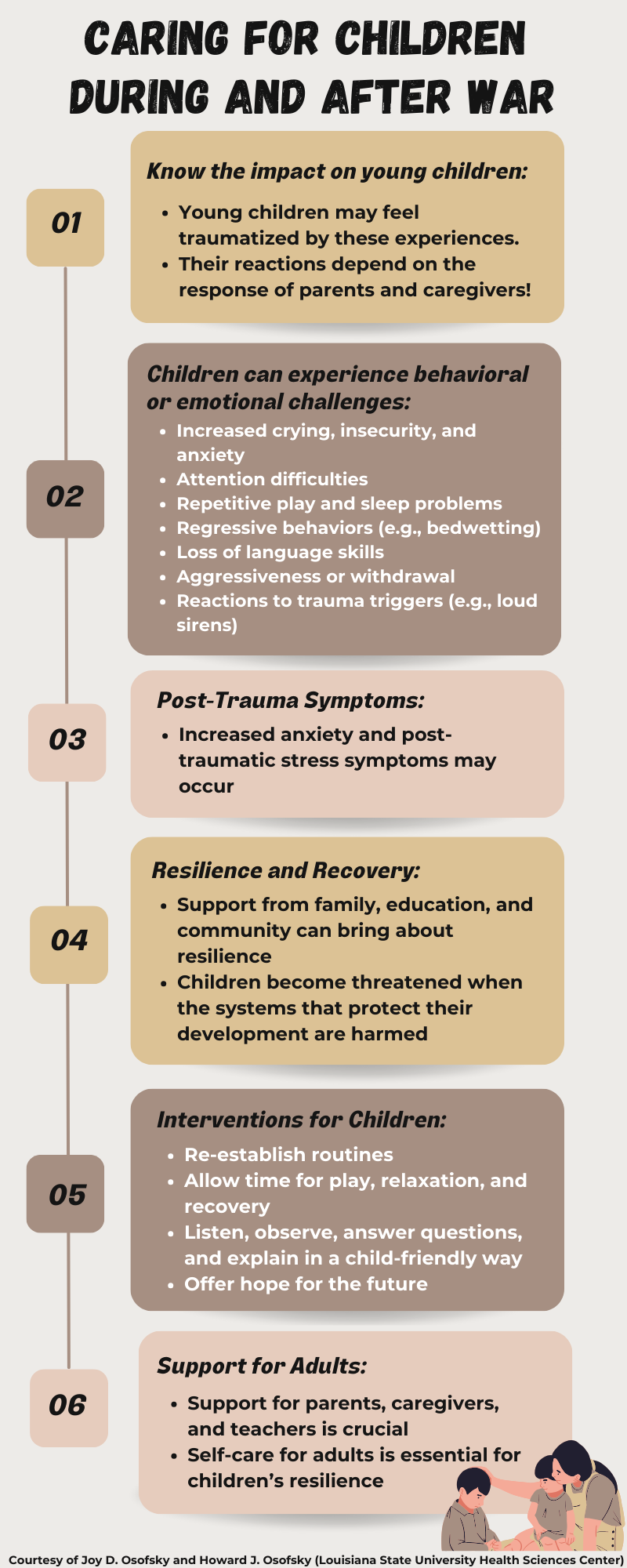Young children can be impacted by various negative events nowadays. Yet they are not “too young” to notice, but may not know how to tell you how they feel. Children exposed to trauma may show how they feel through changes in their behaviors and emotions.
They may cry more, show more anxious or insecure behaviors, have difficulty paying attention, experience sleep problems, regressive behaviors (like bedwetting after being trained), and loss of language skills.
Young children may respond to trauma triggers, for example, loud warning sirens or the color red in a toy reminding them of blood.
How they react, and their recovery often depends on the response of parents and other caregivers.
It is important to be hopeful, as most children will show resilience. Resilience is likely for children who have more emotional and behavioral support from family, education, and community. Support from parents and caregivers is most important to support recovery and resilience.
Interventions To Help Young Children
It is very important to re-establish routines for young children after trauma and violence. Try to provide opportunities for them to play, relax, and recover. Be prepared to listen to a young child and carefully observe them. Find out what they know, answer questions, and explain what is happening in a way they can understand.
Be available to provide support and a sense of hope for the future.
Support For Adults
Provision of support for parents, caregivers, teachers, and other adults is crucial, as parents and caregivers may experience increased anxiety causing them to be less emotionally available for a child.
Self-care for the adults who are caring for young children is very important for themselves and to support resilience in children.
Information provided by:
Joy D. Osofsky, Ph.D. and Howard J. Osofsky, M.D., Ph.D. (Louisiana State University Health Sciences Center)

Discover More
Helpful Links for Psychological Assistance in Ukraine and Abroad
A few simple things that help to reduce your children’s worries.
Books can provide a safe and engaging way for children to explore and understand their emotions, fostering emotional intelligence and resilience.


